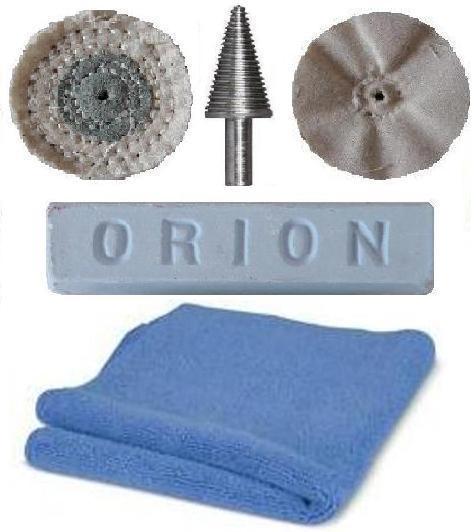Introduction:
Stainless steel is a versatile and popular material known for its corrosion resistance, durability, and aesthetic appeal. Whether in industrial settings, household appliances, or architectural designs, the lustrous finish of stainless steel plays a crucial role in its overall appearance. Polishing stainless steel is not just about achieving a shiny surface; it's a meticulous process that involves both artistry and scientific precision.
Understanding Stainless Steel:
Before delving into the polishing process, it's essential to understand the nature of stainless steel. Stainless steel is an alloy primarily composed of iron, chromium, nickel, and other elements, depending on the specific grade. The chromium content forms a protective oxide layer on the surface, imparting corrosion resistance. The key challenge in polishing stainless steel lies in maintaining and enhancing this protective layer while achieving a mirror-like finish.
The Polishing Process:
Surface Preparation: Begin by cleaning the stainless steel surface to remove any dirt, grease, or contaminants. Use a mild detergent or a specialized stainless steel cleaner.
Rinse the surface thoroughly with water and allow it to dry completely.
Selecting the Right Abrasives:
Choose abrasives based on the severity of imperfections on the surface. For light scratches and blemishes, a fine-grit abrasive pad may suffice. For deeper scratches, coarser abrasives may be required.
Always follow the manufacturer's recommendations and test a small, inconspicuous area before proceeding.
Mechanical Polishing:
Use a polishing machine or buffer equipped with the chosen abrasive. Ensure the machine is set at the appropriate speed to avoid overheating and damaging the stainless steel.
Work in small sections, applying even pressure and moving the machine in a consistent, overlapping pattern.
Gradually transition to finer abrasives to refine the finish and remove any remaining scratches.
Chemical Polishing (Optional):
Chemical polishing agents can be applied to further enhance the shine and remove stubborn stains.
Exercise caution when using chemicals to avoid damage. Always follow safety guidelines and recommendations provided by the manufacturer.
Final Finishing:
Once the desired level of polish is achieved, thoroughly clean the surface to remove any residue from the polishing process.
Apply a stainless steel cleaner or protectant to help maintain the polished finish and protect against future corrosion.
Tips for Success:
Consistency is Key: Maintain a consistent technique and pressure throughout the polishing process to achieve an even finish.
Protective Gear: Wear appropriate personal protective equipment, including safety glasses and gloves, especially when using abrasive materials or chemicals.
Regular Maintenance: Periodically clean and maintain the polished stainless steel surface to prolong its luster and protect against environmental factors.
Conclusion:
Stainless steel polishing is a skill that combines precision, patience, and a deep understanding of the material. When done correctly, it not only enhances the visual appeal of stainless steel but also contributes to its longevity and performance. As we celebrate the one-year anniversary of your stainless steel surface, consider treating it to a meticulous polishing session to keep it shining for years to come.
Investigate our site for more information: -







Comments